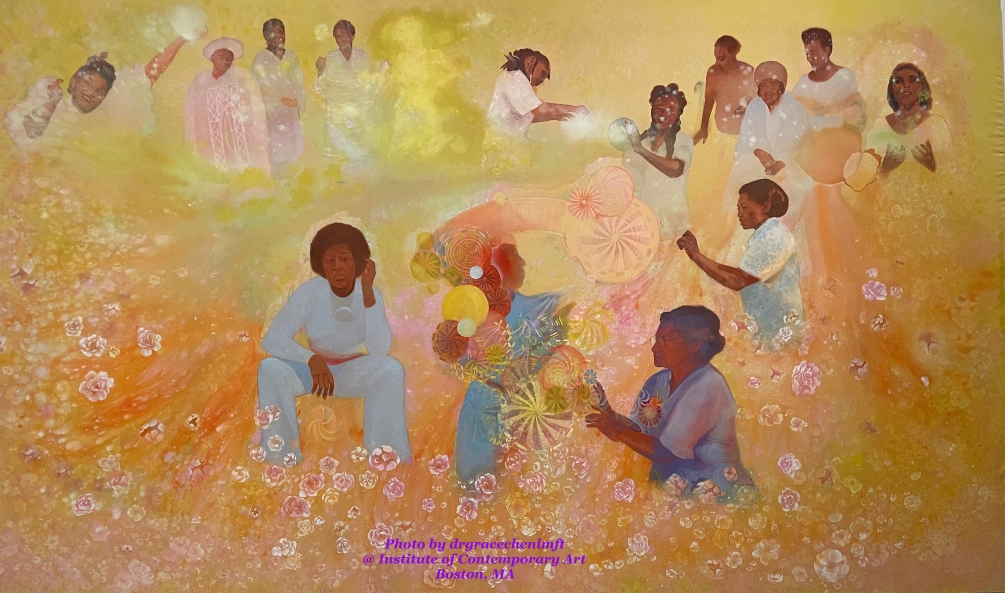The Polvagal Institute website lists Neuroception, ANS, and Co-regulation as the three main concepts of the Polyvagal Theory. For me, to understand co-regulation, you have to understand the “social engagement system” first.

Social Engagement System
The social engagement system is an emergent property of several neural pathways, with the ventral vagal pathway as its core neurophysiological substrate. The social engagement system refers to a functional neural circuit that enables mammals, especially humans, to interact socially, communicate, and co-regulate with others. It involves the coordination of facial muscles, vocalization, head movements, and listening abilities, allowing for the expression and perception of social cues such as facial expressions, tone of voice, and gestures. This system is crucial for forming social bonds, co-regulation (mutual calming), and broadcasting/receiving cues of safety or threat.
Hence, the ventral vagal pathway and social engagement system is connected. The ventral vagal pathway is the neural foundation that enables the social engagement system. The social engagement system is the broader functional network that uses the ventral vagal pathway to facilitate social behaviors, communication, and co-regulation. In essence, the ventral vagal pathway is the anatomical and physiological basis, while the social engagement system is the behavioral and functional outcome
Here are some key concepts of the Social Engagement System:
– The Face-Heart Connection: Because the social engagement system and the vantral vagal pathway is connected, the Social Engagement System is the neural regulation of the heart via the ventral vagal pathways that manage the striated muscles of the face and head. These muscles control eye contact, facial expressions, listening to human voices, vocal tone (prosody), mastication, and head-turning. Essentially, the nonverbal communication through the eye gaze, tone of the voices, and facial expressions communicated how a person feels about the environment, including the people in the environment.
– Neuroception of Safety: The Social Engagement System is activated when the nervous system unconsciously detects cues of safety through neuroception. Cues of safety often come from familiar individuals or those with appropriately prosodic voices and warm, expressive faces.
– Biological Imperative of Social Connection: The social engagement system is foundational for human survival and well-being, as social connectedness is considered a biological imperative. Our nervous system is wired to seek safety and co-regulation through proximity and interaction with trusted others.
– Human Engagement System and Physiological State: This integrated system enables spontaneous social communication and fosters calm behavioral states. The neural circuits linking these components provide an inhibitory pathway that slows heart rate and lowers blood pressure, reducing autonomic arousal and promoting states necessary for social engagement, health, growth, and restoration. The system enables the physiological state to be communicated to others through facial expressions and vocalizations.
Co-Regulation
For me, the concept of Social Engagement System and Co-regulation are connected with each other because the nonverbal communications between people invites human beings to either engage and to connect with each other or disrupts the relationship.
Co-regulation, within the context of Polyvagal Theory, refers to the process by which individuals, particularly mammals, interact to influence and mutually regulate each other’s autonomic states. This process is intimately linked to the functioning of the Social Engagement System.
Here’s how co-regulation works:
– Mechanism through the Social Engagement System: Co-regulation relies on neuroception’s detection of safety. These cues are transmitted through features like encouraging tones of voices, warm facial expressions, eye contact, and inviting gestures. The receiver’s nervous system interprets these cues through neuroception.
– Mutual Regulation of Autonomic State: Co-regulation involves the mutual sending and receiving of signals of safety between two nervous systems. Each person influences and regulates the other, creating a shared physiological state of calm and security
– Outcomes of Co-regulation: Successful co-regulation fosters interpersonal accessibility, trust, and connection.
– Biological Imperative: For mammals, especially humans, connectedness and trusting relationships are described as a biological imperative wired into our biology. Co-regulation, facilitated by the Social Engagement System, is the mechanism that supports this imperative.
– Early Development: Co-regulation begins early in life, such as between an infant and caregiver. These early experiences lay the groundwork for the ability to self-regulate and form healthy relationships later in life.
Co-regulation in Polyvagal Theory is the dynamic, reciprocal process by which people help regulate each other’s physiological and emotional states through cues of safety, forming the foundation for trust, healing, and social connection.
In essence, the Social Engagement System is the neural machinery that allows mammals to connect and interact socially in a way that promotes safety and well-being. Co-regulation is the dynamic process of using this system to regulate physiological states mutually, dampening defenses and fostering calm, connection, and health.


